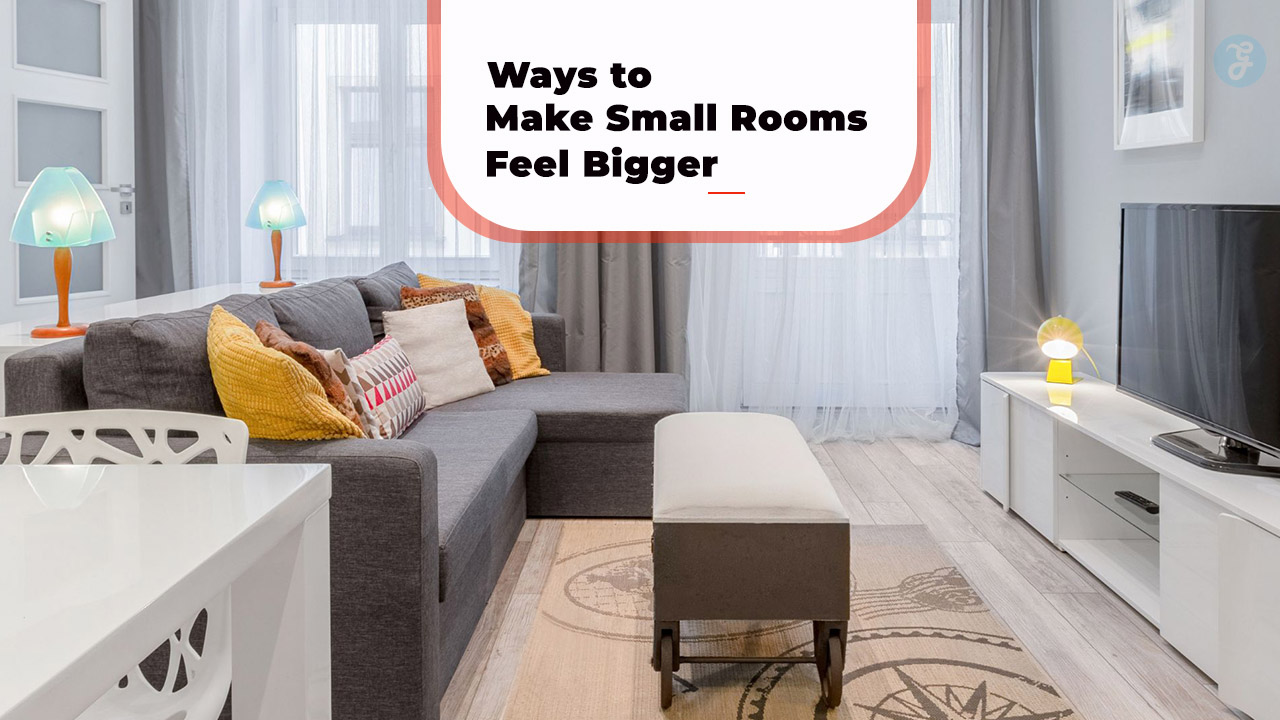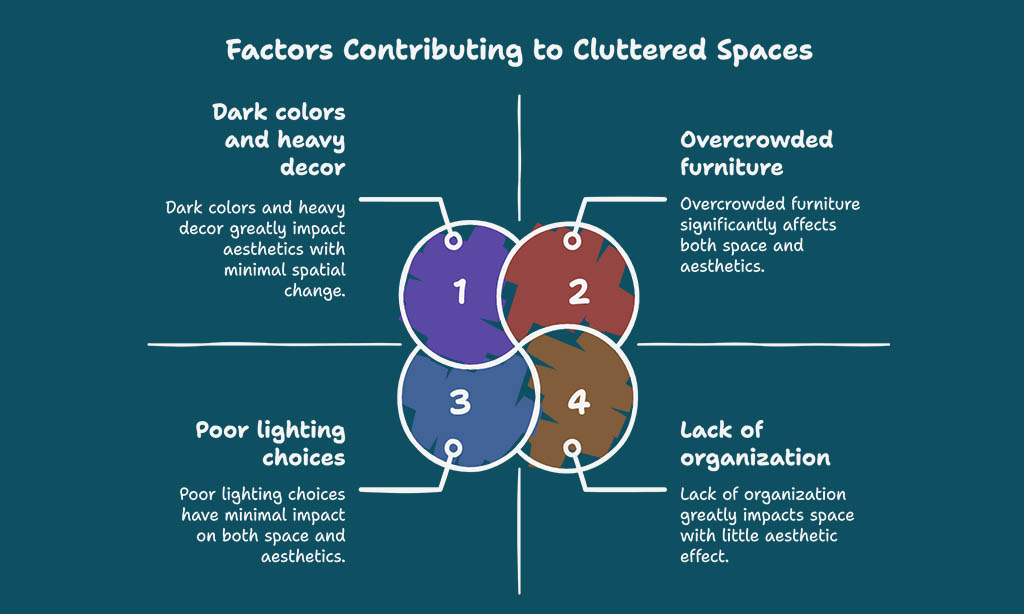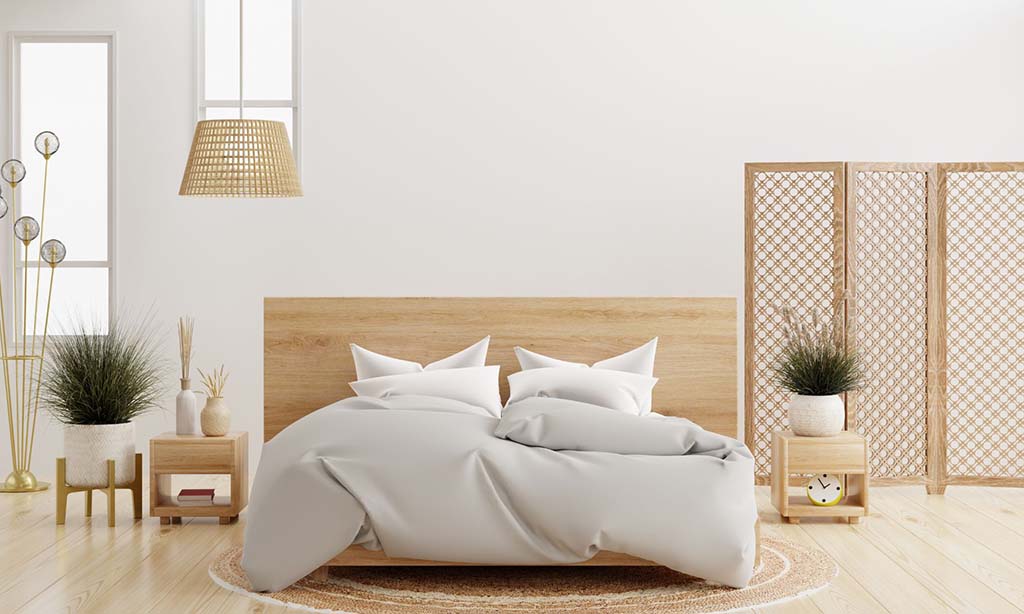A small room doesn’t necessarily have to feel suffocating. However, many homeowners struggle with limited space, making their interiors feel tight and uncomfortable. The good news is that you don’t need to knock down walls or invest in costly renovations to create a sense of openness. Simple yet effective design techniques can dramatically alter the perception of space, making any small room feel more expansive and functional.
Whether you live in a compact apartment, a cozy studio, or a tiny bedroom, the way you organize, decorate, and furnish your space plays a crucial role in determining how spacious it feels.
The key lies in choosing the right furniture, optimizing storage, maximizing lighting, and selecting colors that enhance brightness. Additionally, decluttering and incorporating visual tricks like mirrors can have a profound effect on how open a space appears.
Fortunately, by applying the right strategies, you can visually expand the space, improve functionality, and create a more inviting atmosphere. Small rooms can be transformed into comfortable, stylish, and highly efficient living areas with the right approach.
Common Reasons for a Cluttered Space
Several factors contribute to the feeling of a cramped room. Here are some common culprits:
- Overcrowded furniture: Large or excessive furniture takes up valuable space, making movement difficult.
- Poor lighting choices: Insufficient lighting can create shadows and dark corners, making a room feel even smaller.
- Dark colors and heavy decor: Dark walls, bulky curtains, and excessive decor items absorb light rather than reflecting it, leading to a confined ambiance.
- Lack of organization: Cluttered surfaces and chaotic arrangements make a space feel messy and overwhelming.
- Low ceilings and small windows: Architectural features also impact how open a space feels.
The Science Behind Visual Perception in Small Spaces
The way we perceive a room is largely influenced by color, lighting, and furniture placement. Lighter colors reflect light, creating an illusion of openness, while mirrors enhance depth perception.
Similarly, well-placed furniture can guide the eye to create a more spacious look. Research suggests that minimalist designs and organized layouts help the brain process space more efficiently, making an area feel larger than it actually is.
8 Ways to Make Small Rooms Feel Bigger
A small room doesn’t have to feel restricting. With the right design choices, you can create a sense of openness that enhances both comfort and aesthetics. Whether it’s a tiny bedroom, a compact living space, or a narrow hallway, the strategic use of colors, lighting, furniture, and decor can transform the perception of space.
Below are eight expert-backed ways to make small rooms feel bigger and more inviting.
1. Use Light Colors to Create an Airy Atmosphere
One of the simplest and most effective ways to make small rooms feel bigger is by using light colors. Lighter hues reflect light, creating a sense of openness and brightness. Darker shades, on the other hand, tend to absorb light, making a room feel more enclosed.
Best Color Palettes for Small Rooms
| Color Palette | Effect on Space |
| Soft Whites & Off-Whites | Enhances brightness and expands perception of space |
| Pastel Blues & Greens | Adds color while maintaining an airy feel |
| Neutral Beiges & Grays | Creates warmth without making the room feel heavy |
| Light Yellow & Peach | Adds vibrancy without overwhelming the space |
How Natural and Artificial Light Interact with Colors
A well-lit room automatically feels larger. When choosing wall colors, consider how natural daylight interacts with artificial lighting. Warmer-toned lights can slightly darken a space, while cool-toned lights enhance brightness.
White and pastel colors work best when paired with LED daylight bulbs or large windows that allow ample sunlight.
2. Incorporate Mirrors for a Spacious Illusion
Mirrors are one of the most effective tools for transforming a small space into a visually larger area. They create an illusion of depth and openness by reflecting both natural and artificial light, instantly making small rooms feel bigger.
Placing mirrors in the right spots can enhance brightness, add dimension, and make a room feel more spacious than it actually is. Large wall-mounted mirrors, mirrored furniture, and decorative mirror panels can all contribute to this effect.
Additionally, using floor-to-ceiling mirrors can create a striking visual impact that extends the perceived boundaries of a space, making it appear almost double in size.
Strategic Mirror Placement to Maximize Light Reflection
| Placement | Benefit |
| Opposite Windows | Reflects natural light, making the space feel twice as bright |
| Near Doorways | Creates an illusion of extended space |
| Behind Furniture | Adds depth to small rooms |
| Floor-to-Ceiling Mirrors | Enhances vertical space, making ceilings appear higher |
Best Mirror Types and Frame Designs
- Frameless mirrors: Provide a sleek, modern look that blends seamlessly into walls.
- Large statement mirrors: A floor-to-ceiling mirror creates a dramatic illusion of space.
- Mirrored furniture: Incorporating mirrored surfaces on tables or cabinets can subtly amplify space without overwhelming the decor.
3. Opt for Multi-Functional Furniture
Using multi-purpose furniture is a game-changer when it comes to optimizing small spaces. Instead of cluttering your room with multiple pieces, opt for functional designs that serve multiple purposes while maintaining aesthetic appeal. Choosing furniture with built-in storage, convertible features, and compact designs can significantly enhance both the usability and spaciousness of a room.
For example, a sofa bed provides seating during the day and transforms into a sleeping space at night, making it perfect for small apartments. Similarly, foldable desks or nesting tables offer workspace flexibility without permanently taking up room.
Investing in versatile furniture ensures you make the most of every inch, improving both comfort and functionality in a small living space.
Smart Furniture Choices for Space-Saving
| Furniture Type | Features | Space-Saving Benefit |
| Ottoman with storage | Hidden compartments | Declutters living area |
| Murphy bed | Folds into the wall | Creates extra floor space |
| Extendable dining table | Adjustable size | Adapts to needs |
| Nesting tables | Stackable design | Saves floor space |
| Sofa bed | Converts into a bed | Ideal for small apartments |
4. Declutter and Adopt Minimalist Decor
Clutter is the biggest enemy of small spaces, as it overwhelms the area and makes it feel more confined. Keeping surfaces clear and maintaining a minimalist approach can instantly make a room feel significantly larger and more open.
Adopting smart storage solutions, organizing belongings efficiently, and minimizing excess decor are key strategies in creating an uncluttered and airy space.
Investing in multi-purpose furniture, concealed storage units, and decluttering regularly ensures a more functional and visually appealing environment.
Decluttering Strategies for Small Spaces
| Strategy | Benefit |
| One-in, one-out rule | Prevents accumulation of unnecessary items |
| Hidden storage solutions | Keeps items out of sight for a tidy look |
| Wall-mounted organizers | Frees up floor space while maintaining accessibility |
| Digital decluttering | Reduces paper clutter by storing documents digitally |
| Minimalist decor | Enhances spaciousness by focusing on essential elements |
By implementing these decluttering techniques, you can transform even the smallest rooms into a more comfortable, visually appealing, and functional space.
Decluttering Techniques for a Tidy Look
- Adopt the “one in, one out” rule: If you buy a new decor piece, remove an old one.
- Use hidden storage: Beds with built-in drawers or floating shelves keep things off the floor.
- Keep surfaces clean: Limit the number of decorative items on tables and shelves.
How Minimalism Enhances Spaciousness
Minimalism isn’t just a design choice; it’s a lifestyle. Reducing unnecessary items creates a cleaner and more breathable environment, instantly making small rooms feel bigger.
5. Maximize Natural and Artificial Lighting
Lighting plays a crucial role in how spacious a room feels. A well-lit space with the right balance of natural and artificial lighting can create an illusion of depth, making the room appear larger and more inviting.
Poor lighting can lead to dark corners, making a space feel smaller and cramped. The key is to use layered lighting that includes ambient, task, and accent lighting to highlight different parts of the room. Additionally, opting for sheer curtains or removing heavy drapes can allow more natural light to flow in, further enhancing the perception of spaciousness.
Incorporating smart lighting solutions, such as dimmable LED bulbs and strategically placed mirrors to reflect light, can maximize brightness and openness throughout the room.
The Role of Lighting in Making Rooms Feel Open
| Lighting Type | Effect on Space |
| Recessed Lighting | Eliminates the need for bulky fixtures |
| LED Strip Lights | Highlights architectural features |
| Floor Lamps with Upward Light | Bounces light off the ceiling for a spacious effect |
| Sheer Curtains | Allows more sunlight to enter the room |
6. Use Vertical Space for Storage and Design
When floor space is limited, vertical storage becomes essential. Utilizing walls effectively can free up valuable room area while keeping the floor clear for movement. Installing floating shelves, tall cabinets, and hanging storage options can help optimize every inch of your space. Additionally, built-in wall units or customized shelving can provide tailored storage solutions without overwhelming the room.
Vertical storage not only enhances organization but also draws the eye upward, creating the illusion of a taller and more open space. Incorporating decorative yet functional elements, such as wall-mounted planters or pegboards, can add aesthetic appeal while maximizing utility.
Smart Vertical Storage Ideas
| Storage Type | Benefit |
| Tall bookshelves | Maximizes wall space without crowding |
| Hanging organizers | Great for kitchen, bathroom, and closet storage |
| Wall-mounted desks | Saves floor space while maintaining functionality |
7. Choose Low-Profile and Legged Furniture
Furniture selection dramatically impacts how large a room feels. Choosing pieces that sit lower to the ground or have visible legs creates an illusion of openness by allowing light to pass underneath and reducing visual bulk.
Low-profile furniture, such as platform beds or sleek sofas with tapered legs, helps maintain an airy and spacious ambiance. Additionally, incorporating glass or acrylic furniture, such as coffee tables or dining chairs, can further enhance the sense of openness by minimizing visual obstruction.
When selecting furniture for a small room, prioritizing lightweight, compact, and streamlined designs ensures better functionality without compromising on comfort or style.
Best Low-Profile Furniture Choices
| Furniture Type | Benefit |
| Mid-century modern sofas | Exposed legs enhance openness |
| Floating vanities | Creates an illusion of more floor space |
| Transparent acrylic chairs | Adds seating without visual clutter |
8. Maintain an Open Floor Plan and Clear Pathways
Maintaining an open floor plan and ensuring clear pathways is crucial for making small rooms feel bigger. Avoid placing furniture in walkways or crowding spaces with unnecessary decor. A well-structured layout allows for better movement, creating a sense of openness.
Best Practices for an Open Floor Plan
| Strategy | Benefit |
| Use fewer large furniture pieces | Prevents overcrowding and keeps the space breathable |
| Keep doorways and windows unobstructed | Enhances natural light and airflow |
| Arrange furniture against walls | Maximizes central space for movement |
| Use rugs to define spaces | Helps segment areas without physical dividers |
By thoughtfully arranging furniture and keeping pathways clear, you create an illusion of expansiveness, making your small room feel significantly larger and more functional.
Final Thoughts on Making Small Rooms Feel Bigger
By implementing these 8 ways to make small rooms feel bigger, you can transform your compact space into a more open, airy, and comfortable environment.
Whether you’re working with a tiny bedroom, a small living area, or a compact studio apartment, these techniques can help maximize your available space.
From optimizing lighting and colors to selecting the right furniture, each method contributes to a visually and functionally larger room. Start applying these tips today, experiment with different approaches, and enjoy a home that feels more spacious, inviting, and harmonious!








































